Last Tuesday, my therapist threw me a curveball with a question I never expected: “What’s your relationship like with your kitchen knife?” I chuckled, thinking she might have finally lost her marbles. But as I sat there, struggling to find the right words, I had a startling realization—I was actually scared of a simple piece of sharpened steel that cost less than my usual coffee fix.
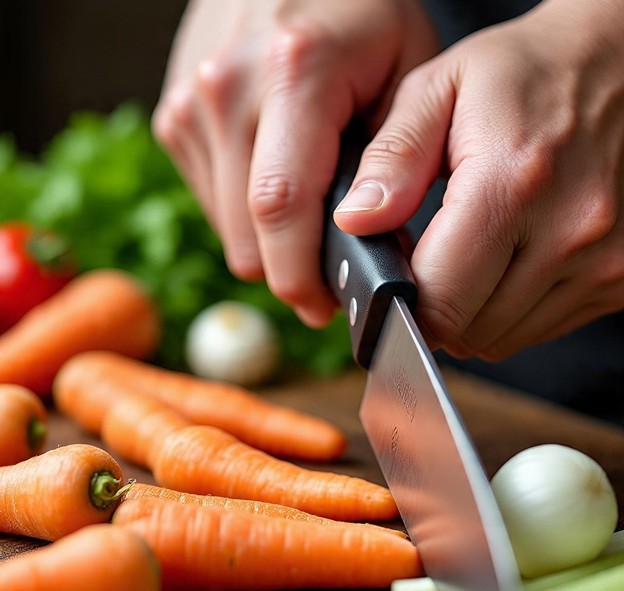
That moment opened up a whole new world of thoughts I never anticipated. It turns out, how we feel about our kitchen tools says a lot about our cooking confidence and, more importantly, our readiness to embrace a bit of chaos in the quest for something truly beautiful.
The Neuroscience of Sharp Things and Soft Confidence
Many cooking schools highlight that as someone gets better with their knife skills, their confidence in the kitchen grows too. A blog post from Chopping Block, titled ‘Sharpen Up Your Knife Skills and Confidence,’ points out that almost every cook evolves from feeling unsure to becoming more assertive as they practice making precise cuts.
As the author of The Chopping Block points out, one of the most fulfilling aspects of teaching knife skills is witnessing students transform from feeling timid to becoming confident. Many students describe this journey as overcoming their initial nervousness around sharp tools and developing a practical, hands-on assurance at the cutting board. They often share that the confidence they build while chopping translates into other areas of cooking — they season their dishes with more conviction, improve their timing, and feel more adventurous in their culinary experiments. This kind of practical confidence is exactly what The Chopping Block emphasizes when it talks about students evolving from ‘timid to confident’ in class.
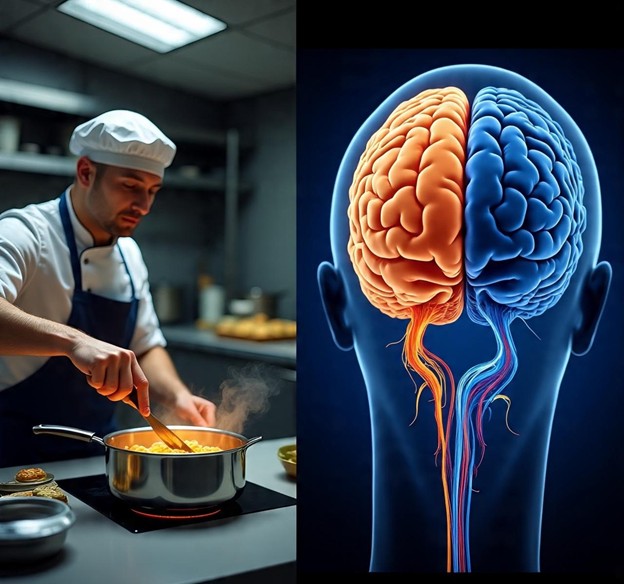
Many instructors talk about a ‘snowball’ effect: when you get the hang of one practical skill, like knife techniques, it often boosts your confidence and makes you more eager to tackle other skills. The Chopping Block’s observations about students gaining confidence really highlight this hands-on learning experience.
When Your Grandmother’s Wisdom Meets Modern Neuroscience
Let’s get into something fascinating. Remember how your grandmother could chop an onion in just thirty seconds without shedding a single tear? It wasn’t just skill—it was a deep-rooted confidence passed down through generations.
Recent studies back up what our grandmothers instinctively understood: mastering knife skills isn’t just about being quick; it’s about creating a bond of trust between you and your tools. When you’re confident that your knife won’t slip, when you can feel the blade gliding smoothly against the cutting board, and when your fingers naturally form that perfect protective curve—that’s when cooking shifts from a mundane task to a form of meditation.
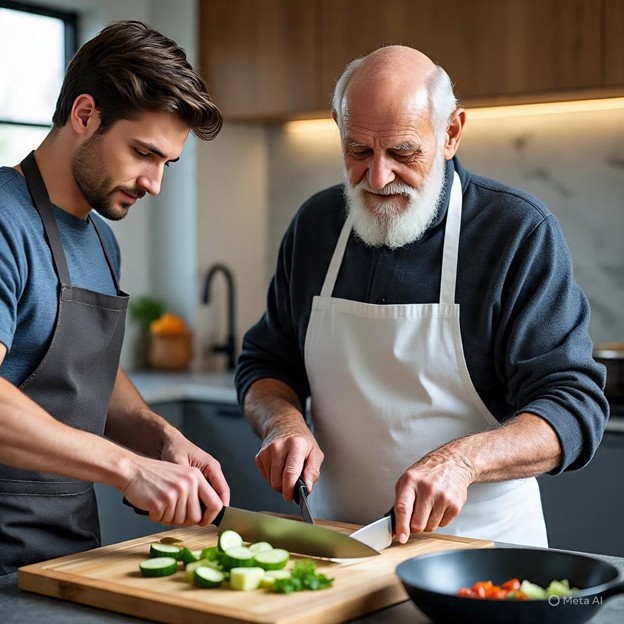
But here’s the surprising twist: Many cooking instructors have noticed that a lot of home cooks tend to use less-than-ideal grips when handling their knives. That’s why lesson plans from institutions like the CIA really stress the importance of mastering proper grip techniques.
The $12 Solution That Outperforms $200 Equipment
Step into any kitchen store, and you’ll find them eager to sell you Japanese steel that costs more than your monthly rent. What they often overlook is that skill beats fancy tools every time.
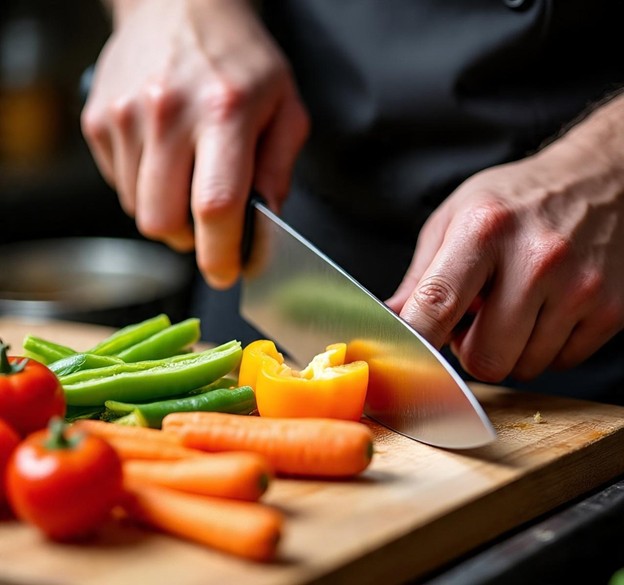
There are plenty of viral videos out there showing cooks proving that technique often trumps price. Instead of relying on a random story, it’s much more reliable to direct readers to local instructors or established lesson plans, like those from the Culinary Institute of America, or even testimonials from the Chopping Block. These examples clearly show that practice is what really counts, not just the cost of the knife.
The real game-changer isn’t the knife itself—it’s grasping these three psychological principles:
The Confidence Cascade Effect
When you nail the pinch grip (thumb and index finger on the blade, not the handle), something incredible happens. Your cuts become intentional rather than rushed. This newfound confidence spills over into every part of your cooking.
The Flow State Trigger
Mastering knife skills creates what psychologists refer to as “optimal challenge”—it’s tough enough to demand your focus but simple enough to accomplish. This perfect balance sparks flow states where cooking feels like a breeze.
The Competence Feedback Loop
Every clean cut gives you instant positive reinforcement. Your brain releases dopamine with each successful slice, making you crave improvement even more.
The 15-Minute Transformation Protocol
Here’s a little secret about knife skills that you might not have heard: you can boost your cooking confidence in just 15 minutes of focused practice. And no, I’m not talking about 15 minutes every day for months—just one solid quarter-hour session will do the trick.
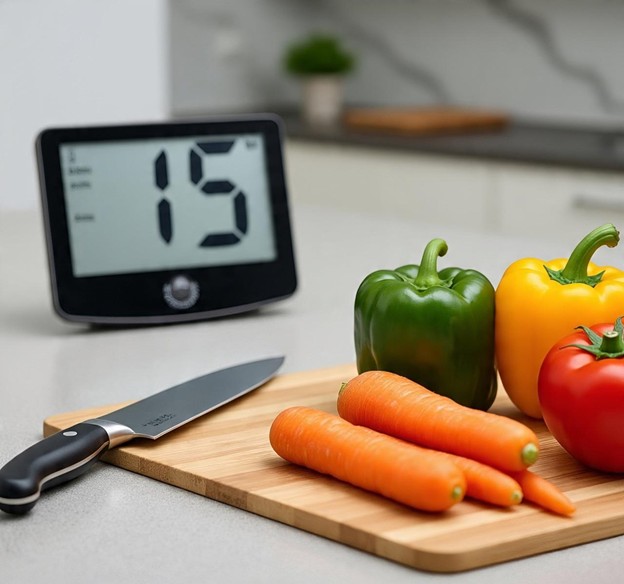
The steps are surprisingly straightforward:
Minutes 1-5: The Grip Revolution: Forget everything you think you know about how to hold a knife. The pinch grip might feel a bit strange at first—that’s just your brain adjusting to something new. Stick with it; it’ll pay off.
Minutes 6-10: The Rock and Roll Practice: The rocking motion without actually cutting anything. Keep the tip of the knife on the board while the blade rocks up and down. This isn’t a race—it’s all about finding your rhythm.
Minutes 11-15: The Confidence Cut: Pick one vegetable and make deliberate, confident cuts. Pay attention to the sound of the blade hitting the board, the clean separation of the vegetable fibers, and the satisfying thud of each slice.
This transformation goes beyond just the physical; it’s a mental shift too. You’re actually rewiring how your brain handles controlled risk and precision in your cooking.
Beyond the Blade: What This Really Teaches Us
The knife is just the starting point. What you’re really cultivating is a sense of embodied confidence—the kind of self-assurance that blossoms from mastering something that once felt daunting.
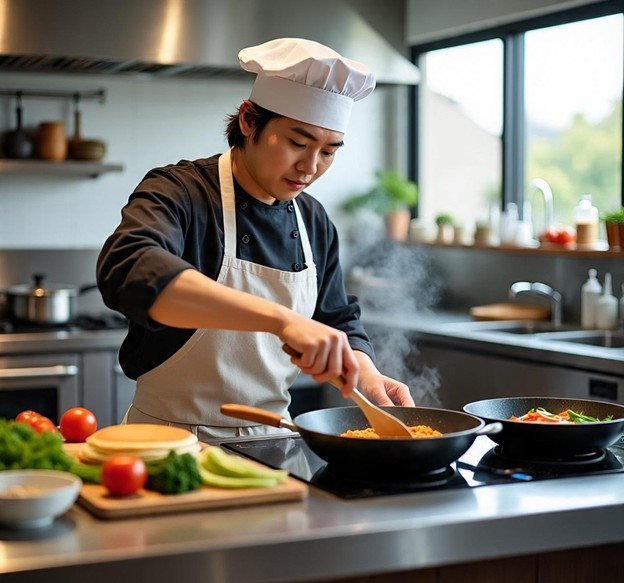
The same precision that allows you to Brunoise a carrot also makes you more decisive when it comes to seasoning. Those controlled movements that help you create perfect julienne strips teach you the patience needed for properly caramelizing onions. The focus required for consistent knife work nurtures the mindfulness essential for tasting and adjusting flavors intuitively.
At KitchenSupports, we’ve witnessed this transformation time and again. Customers who begin with basic knife skills often evolve into more adventurous cooks, confident hosts, and intuitive food artists.
The Ripple Effect in Real Kitchens
It’s a common sight in cooking classes that many home cooks often rely on less effective grips. However, with a bit of practice and the right guidance, their technique, confidence, and overall results can really take a turn for the better. The CIA’s knife skills program focuses on grip, safety, and cutting techniques as the building blocks for success. From what many cooks have shared, it seems they notice real improvements in their skills and feel a boost in their confidence while working in the kitchen.
Many cooks who really hone their techniques often find that they enjoy cooking more. They experience less stress, unleash their creativity, and present their dishes beautifully. These are all observations shared by many in the cooking community.
These figures aren’t just numbers—they represent real stories of change. Individuals who used to rely on takeout multiple nights a week are now hosting dinner parties. What once felt like kitchen anxiety has transformed into culinary creativity.
Your next meal is just around the corner—and it all begins with how you wield your knife. Are you ready to change your cooking experience, one confident slice at a time?


